Late spring at Lincoln Park Zoo, Chicago
Lured by stories of a Grèvy’s zebra birth and other happenings, fellow former docent and Ark editor JT and I met at Union Station for a trip to Lincoln Park Zoo. My borrowed camera and rusty skills don’t do the animals justice, so I recommend that you pay them a visit if you can — soon, before they’re all grown up. After all, the Grèvy’s zebra foal is the first edition since 2001.
We strolled the Children’s Zoo gardens, where not much was in evidence. At last, a resplendent male wood duck sailed past the beaver viewing window, his colors glowing like jewels in the midday sun. You’ll have to take my word for this; unbeknownst to me, the camera had flipped itself to TV mode, so all the photos I thought I was taking were black.
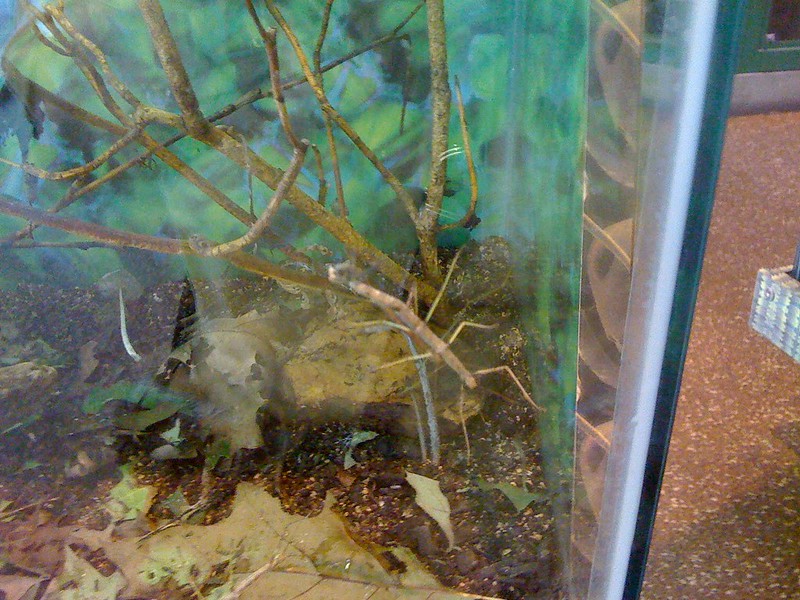
The highlight inside, however, at least to me, was this pair of walking sticks engaged in arthropod love. As a child, I was always thrilled when my brother or I (usually him) would find walking sticks in our yard, often on my dad’s tool shed, where they were easier to spot. They fascinated me, even if they did no more than take a few steps and look like a stick clinging to a shed.
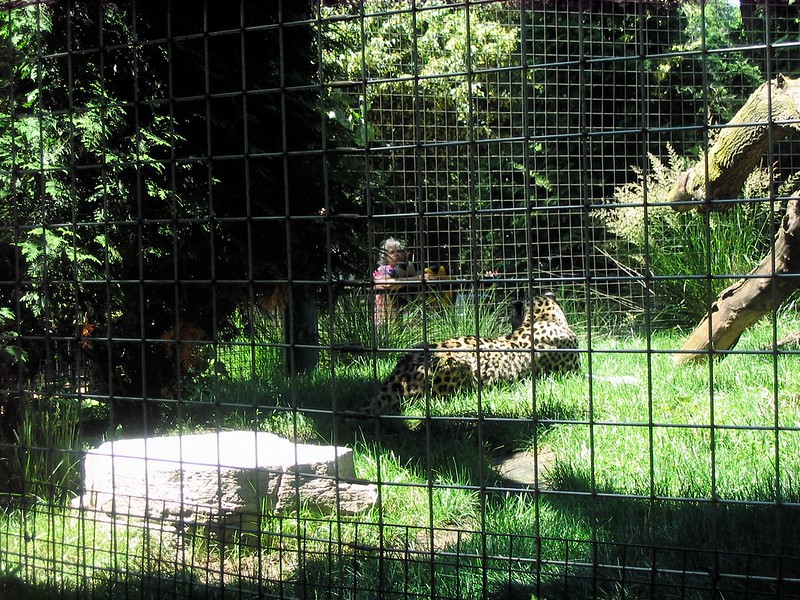
At the Lion House, elderly Afghanistan leopard Christian was taking a catnap. If you want to see animals in action, early morning/late afternoon/evening during summer hours are the best times.
At the Primate House, the black howler monkeys demonstrated their prehensile tails, wrapping them around nearby branches as a stabilizing anchor. One hung by its tail over a food dish, leaving his hands free to rummage through the goodies. Don’t make the mistake one visitor did — those small monkeys who share the exhibit are not baby howlers; they’re Goeldi’s monkeys.
As usual, the black-and-white colobus monkeys were lined up on a branch, quietly digesting in dignity, even as the Allen’s swamp monkey juveniles wrestled and raced their way around the exhibit.
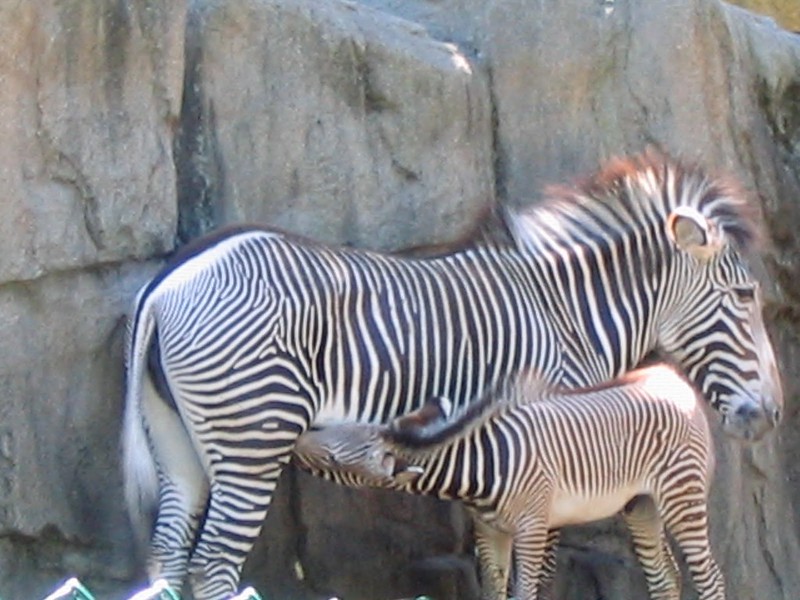
At Antelope/Zebra, the star is Enzi, the Grèvy’s zebra colt, who was lying down when we arrived but then untangled his gangly legs to nurse. When his mother, Adia, went over to the exhibit door to investigate keeper noise, he followed her, but turned around and walked a little distance away from the safety of his mother’s side. JT pointed out to him that, if they were in Africa, his mother would not allow him to be so bold.
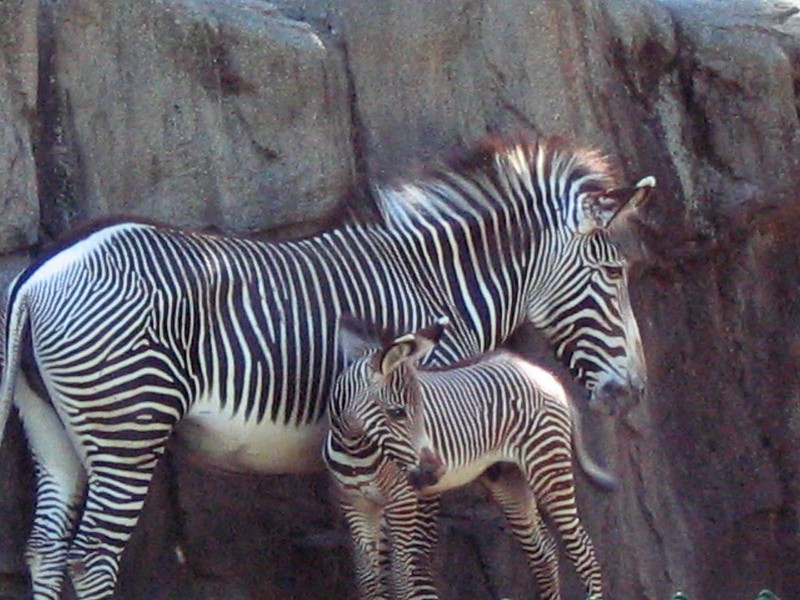
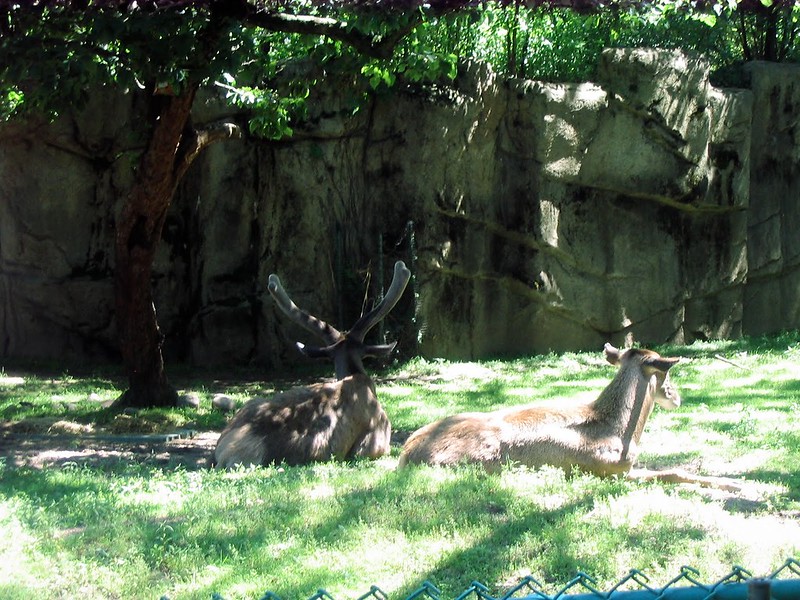
The white-lipped deer were taking a rest. For one thing, I imagine it takes energy and resources to grow a rack like that, still in velvet.
The Bactrian camels were shedding. The Bactrian camels are always shedding.
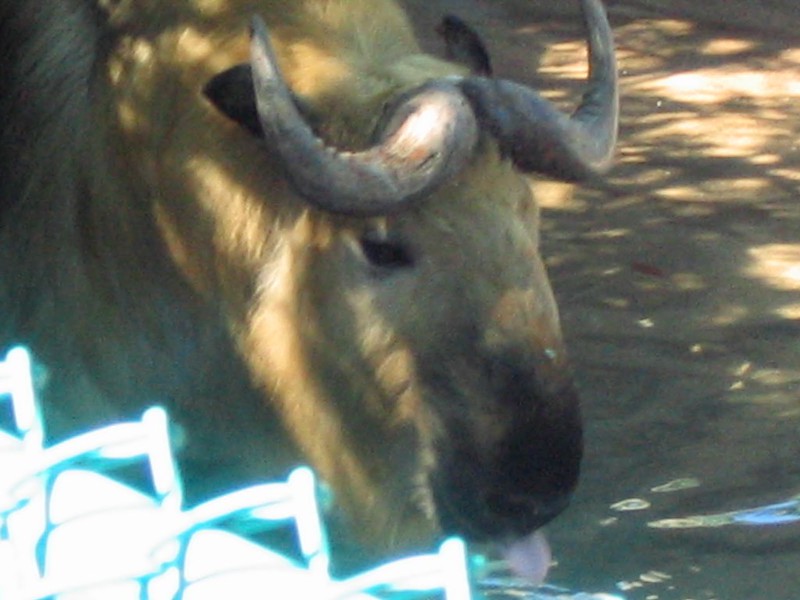
One of my favorite animals, the Sichuan takin, couldn’t decided whether to take a bath, check out the visitors (or the foliage), or scratch his face, so he did all three in a cycle, playing with something in the water (perhaps an aerator) that probably wasn’t intended for takin enrichment. He butted his impressive head against the green wire around the edge, giving us a good look at his face. I gather that the combination of strength and agility makes takins potential escape artists. This guy is among the more charismatic hoofed animals of the collection.
New on exhibit at the Small Mammal-Reptile House is the caiman lizard. I didn’t get a photo, but he’s beautiful, a bit like a combination iguana and small dinosaur with a huge head. I’m told he’s a snail eater.
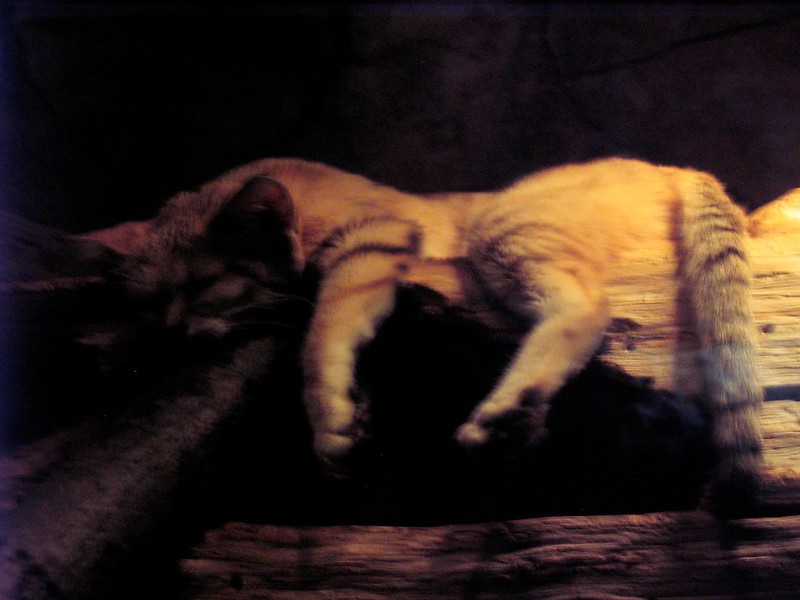
The bats were more active than usual; perhaps their feeders had just been refilled. Nearby, this sand cat was relaxed. I apologized to him profusely for accidentally letting the flash go off. Within five minutes he was up and about, looking almost like a tiny house cat with an oversized head.
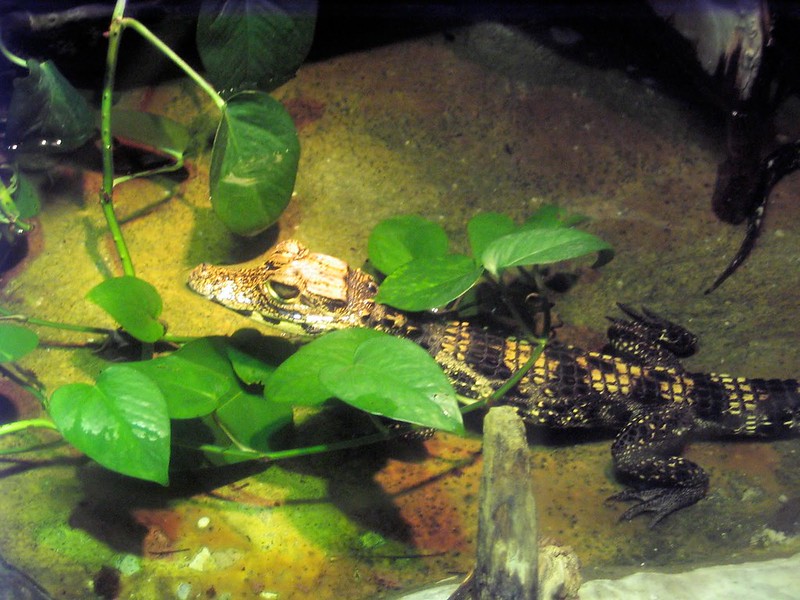
This is a young African dwarf crocodile, one of five produced by the recently deceased R1 late in his long life and his younger mate and occasional sparring partner Maggie. Sure, it looks sweet now, but you wouldn’t want to meet it in a few years.
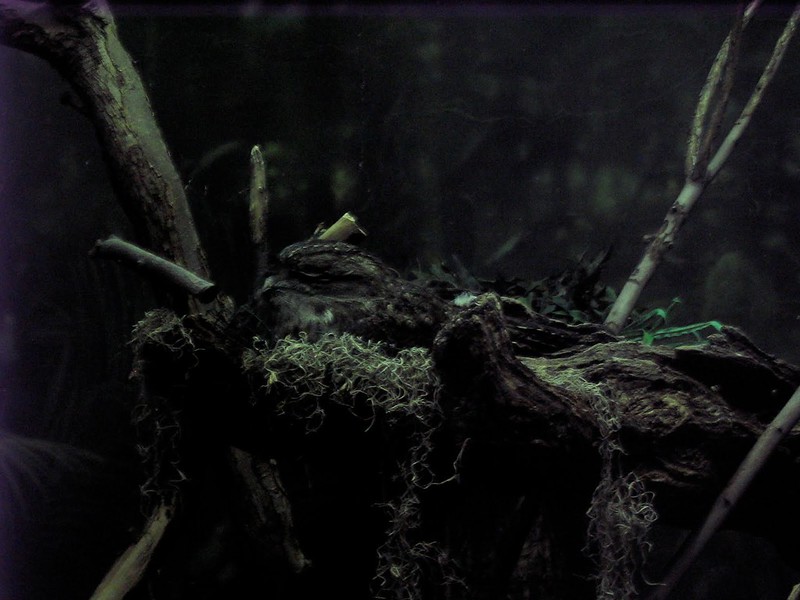
At the Bird House, the tawny frogmouths demonstrate camouflage. I almost missed the one lying down. Like many owls, they blend in with tree bark, but they aren’t owls — they’re in the nightjar/oilbird order. Think of the superbly camouflaged whippoorwill, which you may hear but rarely see.
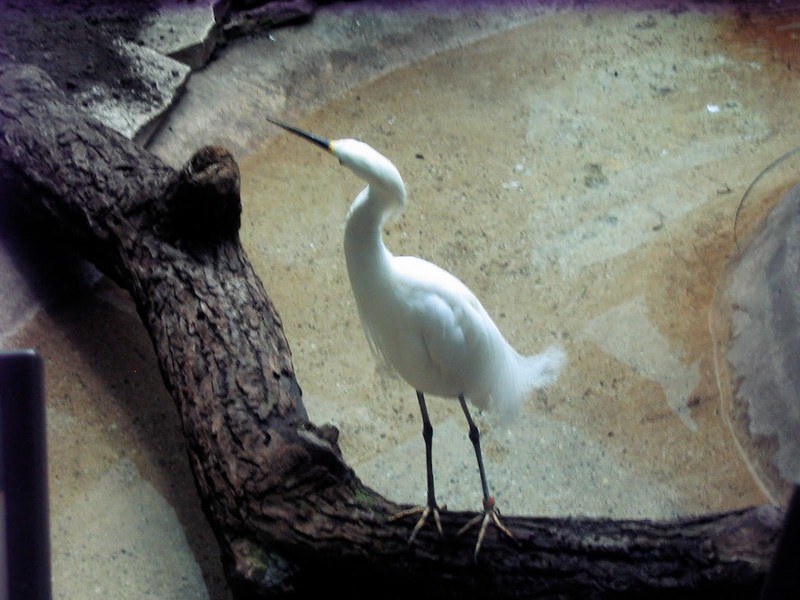
This snowy egret gave us a good look at its slender form and elegant plumage. While I might understand the appeal of their feathers as adornment, I can’t conceive of how men slaughtered them en masse in cold blood for the sake of greed. J and I have seen them in the wild, so to speak, at Volo Bog, where there was a small flock a few weeks ago.
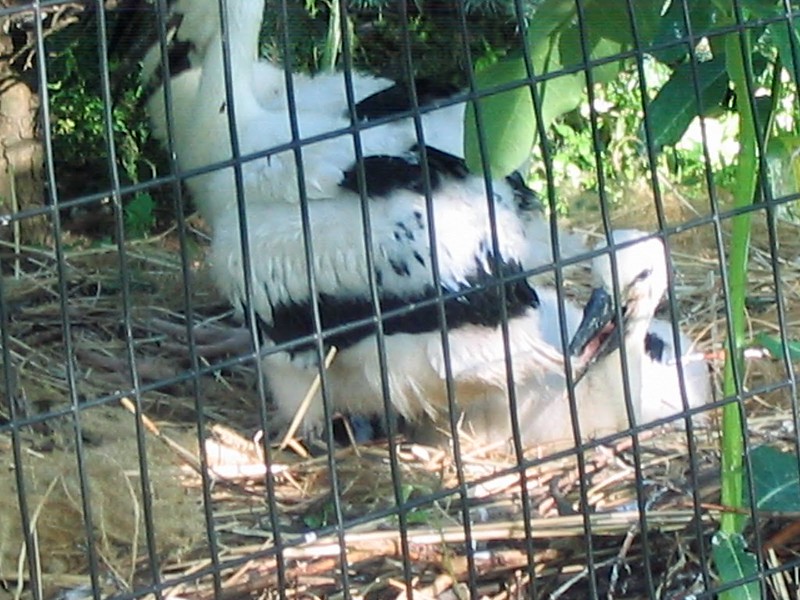
When the European stork isn’t dropping off babies to expectant parents, it’s tending its own nest. These three chicks hatched in late May, along with a cinereous vulture chick.
Happy Father’s Day to the storks and all the zoo parents.

Comments
Late spring at Lincoln Park Zoo, Chicago — No Comments
HTML tags allowed in your comment: <a href="" title=""> <abbr title=""> <acronym title=""> <b> <blockquote cite=""> <cite> <code> <del datetime=""> <em> <i> <q cite=""> <s> <strike> <strong>